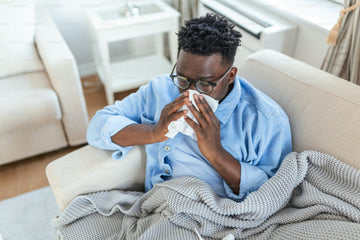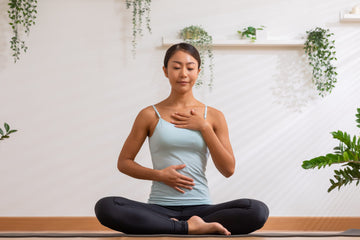You might think of your home as your safe space—the cozy place you retreat to when the outside world feels too chaotic. But for many people, their homes are also the biggest source of allergy flare-ups. Surprising, right? You can vacuum, dust, and wash your sheets religiously and still end up with watery eyes, a stuffy nose, or that constant tickle in your throat.
The truth is, homes are sneaky. They’re filled with hidden allergy triggers that build up over time without us realizing it. From the air we breathe to the fabrics we sleep on, these triggers can make our bodies feel like they’re in a never-ending battle. The good news? Once you know where to look, you can take simple, practical steps to create a space that’s clearer, healthier, and a whole lot easier to breathe in.
Let’s break down the most common hidden culprits in your home—and what you can do about them.
1. Dust Mites: The Invisible Irritants
Dust mites are tiny creatures you’ll never see with your eyes, but they thrive in mattresses, pillows, and upholstered furniture. They love warm, humid environments and feed on skin flakes (gross, but true). Their waste particles are what trigger sneezing, congestion, and itchy eyes.
What you can do:
Wash bedding weekly in hot water.
Use a Bed Bug Proof Pillowcase or allergen-proof covers for mattresses and pillows.
Keep humidity under control with a dehumidifier or humidifier set at safe levels (around 40–50%).
2. Pet Dander: More Than Just Hair
Think pet hair is the problem? Not exactly. The real trigger is dander—tiny flakes of skin that pets shed, which stick to carpets, couches, and even walls. It’s lightweight and can stay airborne for hours, making it easy to breathe in without realizing it.
What you can do:
Bathe and groom pets regularly.
Vacuum with a HEPA filter to trap microscopic particles.
Consider keeping pets out of the bedroom to give your body a break while you sleep.
3. Mold Spores: The Hidden Growth in Damp Spaces
Mold doesn’t just grow in basements—it can lurk in bathrooms, under sinks, and even inside humidifiers if they’re not cleaned often. Mold spores float through the air and are notorious for triggering congestion and sinus irritation.
What you can do:
Keep bathrooms well-ventilated.
Fix leaks quickly to prevent dampness.
Use an Ultrasonic Cool Mist Humidifier responsibly, and clean it regularly to avoid mold growth.
4. Indoor Air Pollution: The Stuff You Don’t See
Homes can trap pollutants from cooking, cleaning products, candles, and even outdoor air sneaking in. The result is poor indoor air quality, which aggravates allergies and breathing issues.
What you can do:
Open windows regularly for fresh air (when pollen counts are low).
Use a Deodorizing HEPA Air Purifier to filter out allergens, smoke, and dust.
Switch to natural cleaning products with fewer chemicals.
5. Bedding and Fabrics: Allergy Havens
Your cozy blankets, curtains, and rugs may be holding onto more than warmth. They can trap dust, pollen, and dander, which makes your home feel like an allergy trap.
What you can do:
Wash curtains and blankets seasonally.
Vacuum rugs weekly with a HEPA filter.
Opt for machine-washable fabrics whenever possible.
6. Clutter and Knick-Knacks: Dust Collectors
It might be that shelf of books or the dozen picture frames on your nightstand—clutter is a magnet for dust. The more surfaces you have, the harder it is to keep allergens under control.
What you can do:
Declutter spaces to minimize dust accumulation.
Wipe down surfaces weekly.
Choose décor that’s easy to clean.
7. Seasonal Invaders: Pollen Sneaking Indoors
Even if you’re careful outside, pollen finds ways to hitchhike into your home—on clothes, shoes, hair, and even pets. Once inside, it can settle into carpets and furniture.
What you can do:
Leave shoes at the door.
Change clothes and shower after spending time outdoors during high pollen days.
Keep windows closed on peak allergy days.
Turning Your Home Into a Clear Zone
Your home should feel like a sanctuary, not a battlefield for your sinuses. While it’s impossible to eliminate every single allergen, taking small, consistent steps can make a huge difference in how you feel every day. From tackling dust mites and pet dander to improving indoor air quality and reducing clutter, each change adds up to a healthier environment.
Think of it this way: every little adjustment you make gives your body one less thing to fight against. Over time, that means fewer sneezes, deeper sleep, and more energy to enjoy life outside your front door. With awareness and the right tools, you can turn your home into the allergy-friendly haven it’s meant to be.







